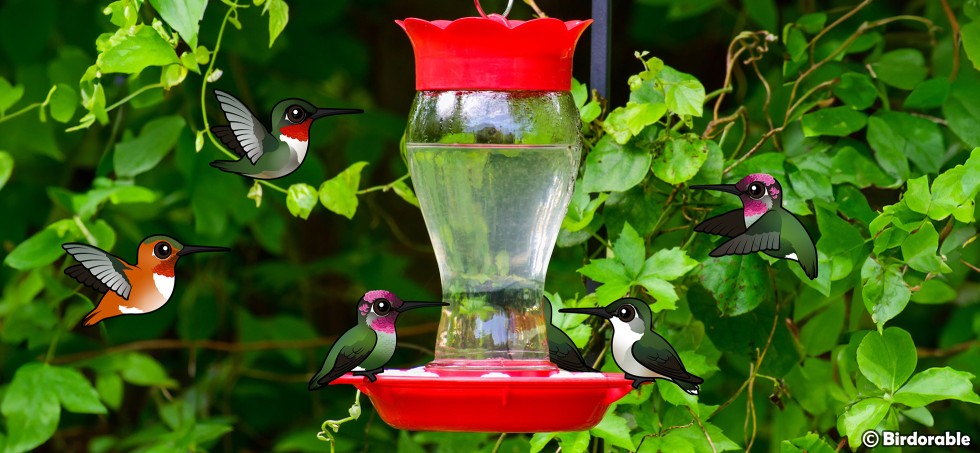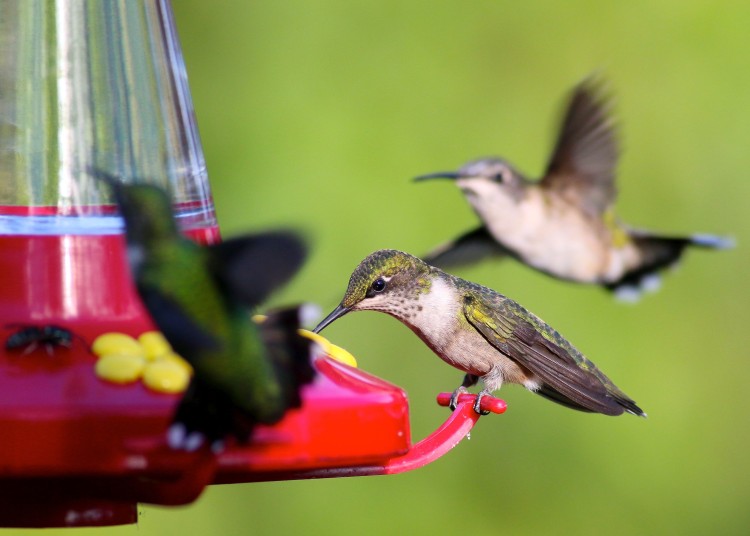Hummingbird Week 2024
Busting a Bird Myth: Feeding Hummingbirds in Fall and Migration

A common myth surrounding hummingbirds is that feeding them in the fall will prevent them from migrating. This myth suggests that providing a food source during migration season will encourage hummingbirds to stay in one place rather than making their long journey south for the winter. However, this belief is not supported by scientific evidence. Let's explore why this myth persists and the reality of how hummingbird migration works.
Why Do Hummingbirds Migrate?
Hummingbird migration is primarily driven by instinct and environmental cues, not by the availability of food. As the amount of daylight decreases in the fall, migratory hummingbirds experience hormonal changes that trigger their behavior and movements. These changes prompt them to start their journey to their wintering grounds, regardless of the local food supply. This instinct is deeply ingrained and ensures that they migrate to warmer climates where they can find abundant food during the colder months.
Should We Feed Hummingbirds in the Fall?
Providing food for hummingbirds in the fall can actually be beneficial for these tiny travelers. During migration, hummingbirds need to consume large amounts of energy to fuel their long flights. A reliable food source, such as a well-maintained feeder filled with a simple solution of sugar water, can help them build up the fat reserves they need for their journey. Far from discouraging migration, feeding hummingbirds can support their natural behavior by ensuring they have the necessary energy to make the trip.
Another reason the myth persists is the observation of lingering hummingbirds at feeders in the fall. Some people mistakenly believe that the presence of these birds means they are delaying or foregoing migration due to the easy food source. In reality, these birds are usually just stopping by feeders to refuel before continuing their journey. Additionally, some hummingbirds naturally migrate later than others, so it's not uncommon to see them visiting feeders well into the fall season.

Ruby-throated Hummingbirds at a feeder by dfaulder (CC BY 2.0)
It's also important to note that there are different species of hummingbirds with varying migration patterns. For example, the Ruby-throated Hummingbird, commonly found in eastern North America, typically migrates to Central America for the winter. In contrast, some species on the West Coast, like the Anna's Hummingbird, may stay in milder climates year-round or only migrate short distances. Understanding the specific migration habits of the hummingbirds in your area can help dispel the myth further.
To support migrating hummingbirds, it's recommended to keep feeders up until at least two weeks after you see the last hummingbird in the fall. This practice ensures that any late migrants passing through will have access to a valuable food source. Just remember to keep the feeders clean and filled with fresh nectar to prevent the growth of harmful mold and bacteria.
Hummingbird Myth: Busted!
The myth that feeding hummingbirds in the fall will stop them from migrating is unfounded. Hummingbirds are guided by instinct and environmental cues to migrate, and providing them with food can actually aid in their long journey. By maintaining feeders during migration season, we can help these remarkable birds get the energy they need to travel to their wintering grounds safely.
How to Make Hummingbird Nectar
It's easy to make the ideal hummingbird food for your feeding station. Just mix sugar and water together without any additives, artificial sweeteners, or dyes. The recipe is simply 1 part sugar with 4 parts water. Clean your feeders often to prevent mold and the spread of disease. The National Zoo has more information here: Hummingbird Nectar Recipe.












Comments
Leave a comment
Thank you!